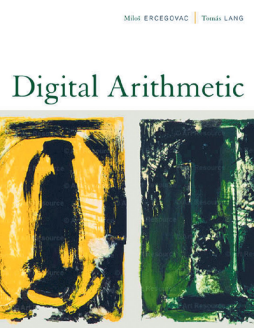
Additional Information
Book Details
Abstract
Digital arithmetic plays an important role in the design of general-purpose digital processors and of embedded systems for signal processing, graphics, and communications. In spite of a mature body of knowledge in digital arithmetic, each new generation of processors or digital systems creates new arithmetic design problems. Designers, researchers, and graduate students will find solid solutions to these problems in this comprehensive, state-of-the-art exposition of digital arithmetic.
Ercegovac and Lang, two of the field's leading experts, deliver a unified treatment of digital arithmetic, tying underlying theory to design practice in a technology-independent manner. They consistently use an algorithmic approach in defining arithmetic operations, illustrate concepts with examples of designs at the logic level, and discuss cost/performance characteristics throughout. Students and practicing designers alike will find Digital Arithmetic a definitive reference and a consistent teaching tool for developing a deep understanding of the "arithmetic style" of algorithms and designs.
- Guides readers to develop sound solutions, avoid known mistakes, and repeat successful design decisions.
- Presents comprehensive coverage¾from fundamental theories to current research trends.
- Written in a clear and engaging style by two masters of the field.
- Concludes each chapter with in-depth discussions of the key literature.
- Includes a full set of over 250 exercises
Ercegovac and Lang present a comprehensive yet easily readable treatment of computer arithmetic that spans from theory to current practice. This book should be on every digital designer's shelf.
—William J. Dally, Stanford University
Digital Arithmetic provides comprehensive coverage of the most important and useful concepts used in computer arithmetic. The scientific and academic community will benefit greatly from this book.
—Alexandre F. Tenca, Oregon State University
The extensive mathematical proofs and the discussions of their implementations make this book a significant scientific and technical contribution.
—Paolo Montuschi, Politecnico di Torino, Italy
